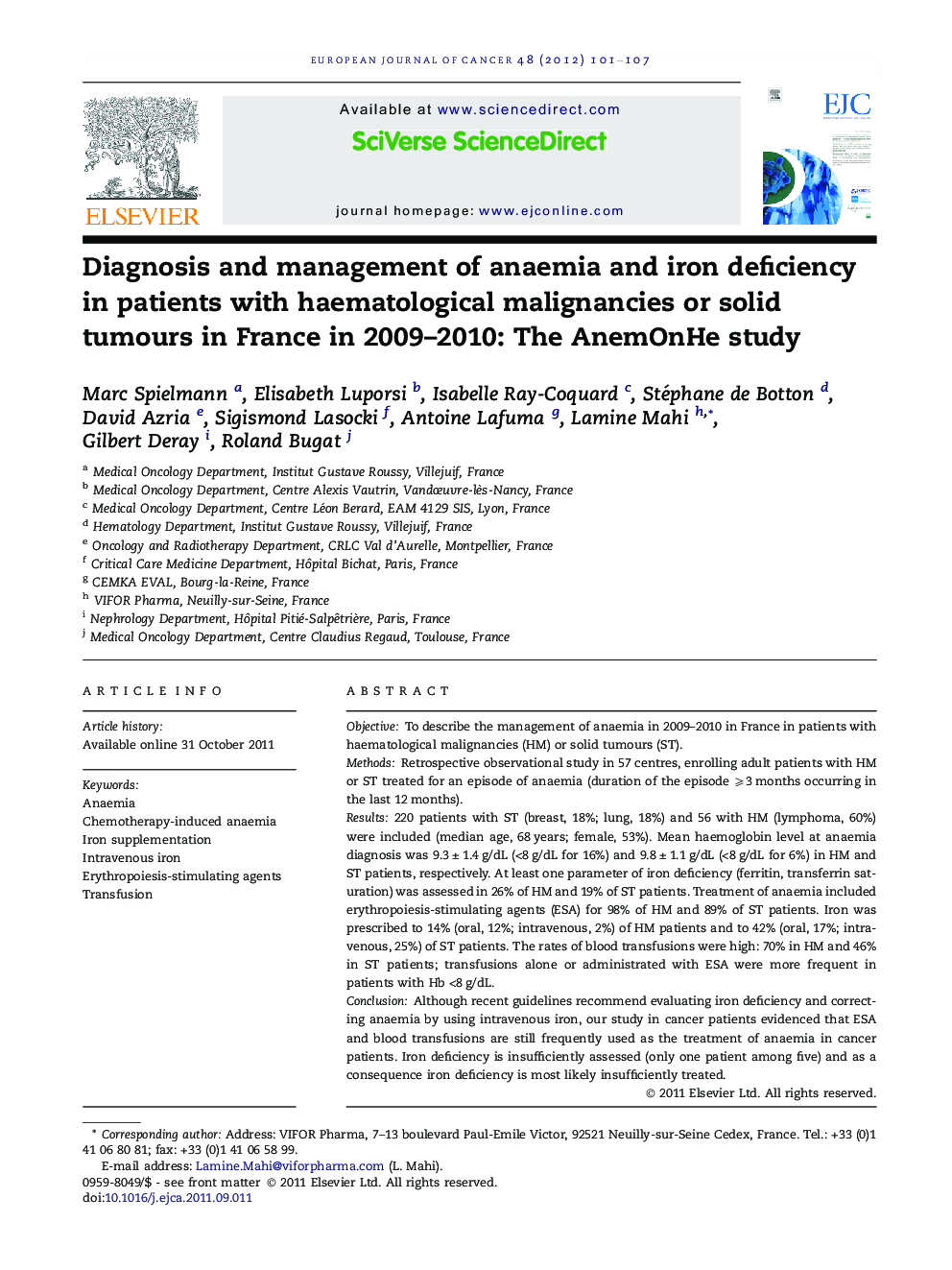| Article ID | Journal | Published Year | Pages | File Type |
|---|---|---|---|---|
| 2122386 | European Journal of Cancer | 2012 | 7 Pages |
ObjectiveTo describe the management of anaemia in 2009–2010 in France in patients with haematological malignancies (HM) or solid tumours (ST).MethodsRetrospective observational study in 57 centres, enrolling adult patients with HM or ST treated for an episode of anaemia (duration of the episode ⩾3 months occurring in the last 12 months).Results220 patients with ST (breast, 18%; lung, 18%) and 56 with HM (lymphoma, 60%) were included (median age, 68 years; female, 53%). Mean haemoglobin level at anaemia diagnosis was 9.3 ± 1.4 g/dL (<8 g/dL for 16%) and 9.8 ± 1.1 g/dL (<8 g/dL for 6%) in HM and ST patients, respectively. At least one parameter of iron deficiency (ferritin, transferrin saturation) was assessed in 26% of HM and 19% of ST patients. Treatment of anaemia included erythropoiesis-stimulating agents (ESA) for 98% of HM and 89% of ST patients. Iron was prescribed to 14% (oral, 12%; intravenous, 2%) of HM patients and to 42% (oral, 17%; intravenous, 25%) of ST patients. The rates of blood transfusions were high: 70% in HM and 46% in ST patients; transfusions alone or administrated with ESA were more frequent in patients with Hb <8 g/dL.ConclusionAlthough recent guidelines recommend evaluating iron deficiency and correcting anaemia by using intravenous iron, our study in cancer patients evidenced that ESA and blood transfusions are still frequently used as the treatment of anaemia in cancer patients. Iron deficiency is insufficiently assessed (only one patient among five) and as a consequence iron deficiency is most likely insufficiently treated.
